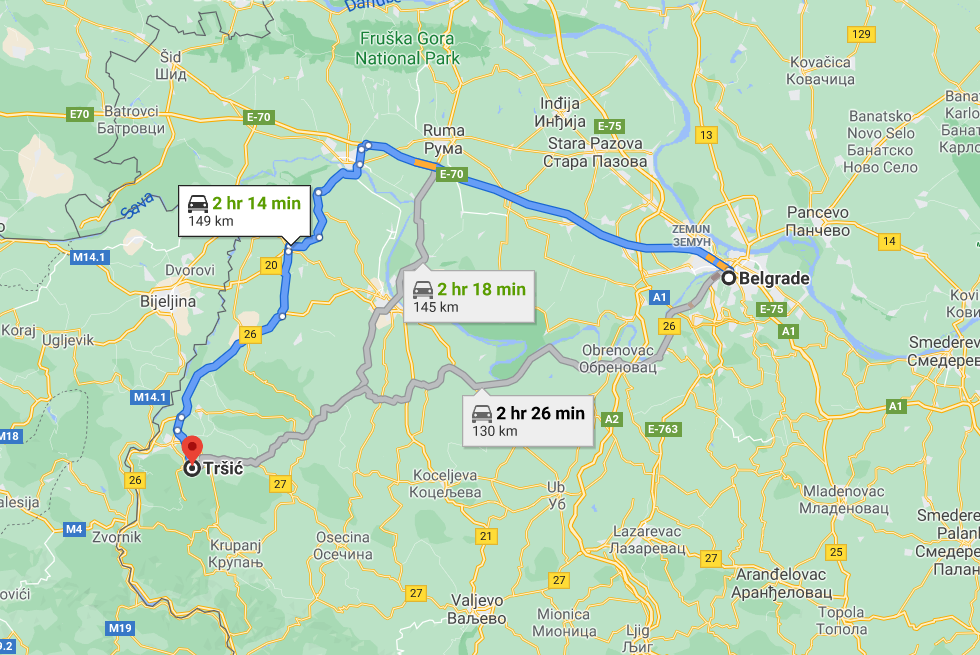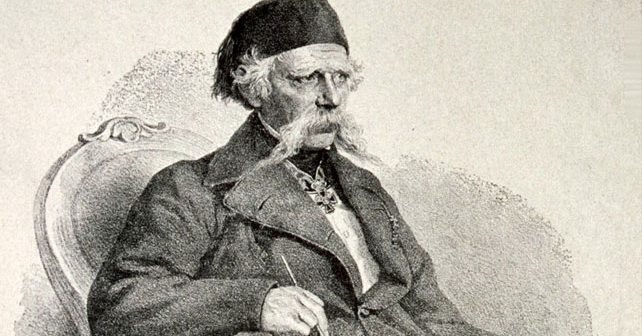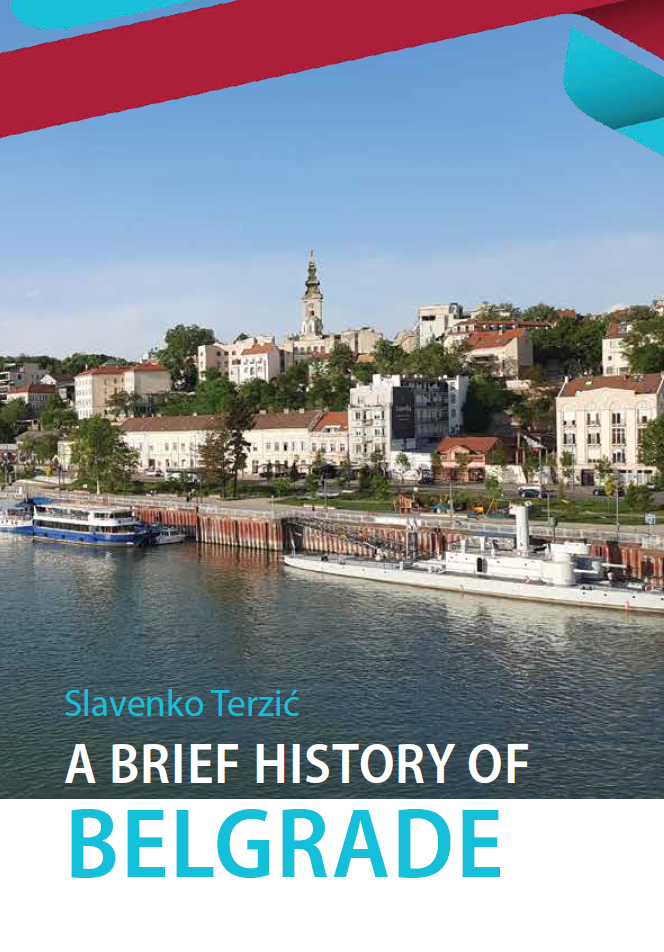Trsic
Not far from Loznica, only some 9 km from the town on the slopes of Gucevo, there is a village of just over 1200 inhabitants named Trsic. What is Trsic famous for? What is it that makes this place special, which is why Trsic was declared by the Government of Serbia as a protected entity of exceptional cultural and natural values and an area of exceptional importance?
At the end of the 18th century, more precisely on November 6, 1787, the greatest reformer and practically the father of the Serbian language as we know it today, Vuk Stefanovic Karadzic, was born in Trsic. Although burned several times by the Turks, the house and buildings next to it have been renovated and today represent an authentic cultural and ethnographic whole, a unique ethno-park.

Vuk Stefanovic Karadzic
Born in a very difficult time, in a family where children often died, he was given a name that was supposed to protect him from evil spirits and witches, the name Wolf. He learned to read and write from his cousin Jevta Savic Cotric, then the only literate man in those parts. He continues his education at the school in Loznica, due to a serious illness he failed to finish. He later continued his education in the Tronosi monastery. The problem with his education in the monastery was that instead of books, he received cattle for safekeeping, so he decided to return.
Vuk was a participant in the First Serbian Uprising. He was a clerk with the Cer hajduk harambaša Djordje Djurcija. In the same year, he tried to enroll in the Karlovac High School, but he did not succeed because he was too old to enroll at the age of 17. He tried unsuccessfully to continue his education in Petrinja, learning German, as well as with Dositej Obradovic in Belgrade, who rejected Vuk's request for help.
After Dositej founded the Great School in Belgrade, Vuk finally got the opportunity to continue his education and become a student of Dositej's school. Unfortunately, due to a leg disease, he had to stop schooling in Dositej's as well. He moved first to Novi Sad, and then to Pest. He returned to Serbia in 1810 and worked as a primary school teacher.

source: wikipedia
After the collapse of the uprising, Vuk fled with his family to Zemun, and after that to Vienna. It is a step that represents a turning point in his academic and educational career. In Vienna, he met his Viennese wife, Ana Maria Kraus. Also, in Vienna, he met Jarnej Kopitar, a Slovenian censor, with whose help he began working on making a grammar of the vernacular and collecting folk songs and intellectual creations. In 1814, Vuk published his first collection of collected folk songs and the first grammar of folk speech. He wrote the grammar at Kopitar's urging, although he did not have enough education for such an endeavor. The grammar he published in 1814, despite having many shortcomings, is considered the first grammar of the vernacular. In the first grammar, Vuk greatly simplified the alphabet and spelling and introduced new voices to the existing 24, which he kept from the old alphabet.
The year 1847 is considered the year of Vuk's final victory. In that year, Vuk finally managed to prove that the vernacular is the only real language of Serbs, ie that the Slavo-Serbian language used by more educated and richer people is a mixture of Russo-Slavic and vernacular Serbian without well-founded rules. As a confirmation of the victory after the reform, writing grammar and vocabulary, four important works are published in the reformed Serbian language:
• "Gorski Vjenac" - Petar Petrovic Njegos
• "Songs" - Branko Radičević
• Translation of the "New Testament" into Serbian
• "War for Serbian languages and spelling" - a discussion on the language of Djura Danicic
Trsic – Location
Trsic is located in the very west of Serbia and belongs to the municipality of Loznica, from which it is less than 8 km away. The road from Loznica to Trsic is very good, so you can reach Trsic relatively quickly and with all four wheels and axles. Unfortunately, I did not have the opportunity to reach Tršić from alternative directions. My road was simple Belgrade-Loznica-Trsic, so I can't testify about the condition of other roads to Trsic.
The complete Trsic has been transformed into a single ethnographic whole. Since 2017, the educational and cultural center "Vuk Karadzic" has been located in that area. The parking lot in front of the complex is huge and well arranged, so you will not have any problems if you decide to go on a trip to Trsic.
Tršić is a place of exceptional cultural, historical, and natural significance, which also received the title of an open-air museum. There are 35 scattered authentic houses on the site, which are connected by a network of winding paths that connect with wells, barns, and open fireplaces. Just as Vuk described in his works, Trsic represents a typical Dinaric Serbian village of the 19th century.

Although Vuk's house has been the subject of Turkish revenge at least 10 times in its history, today it has been completely renovated and given its authentic appearance described in Vuk's books. Vuk's memorial house is a two-part log cabin, partly above the basement, with a steep roof and an open fireplace characteristic of that time. The house has a table, a lamp, icons, a bed, a fiddle, as well as Vuk's portraits from 1816.
When you find yourself in Trsic, the first place you will probably visit is Saboriste. It is a place where every year, in memory of Vuk Karadzic, the reformer of the Serbian language and grammar, the two largest and most important cultural events are held, namely Vuk's Assembly and the Student Assembly. In the yard next to the house there is a sculpture, a barn, a barn, and a corn basket.
The river Zeravija flows through Trsic itself, along the length of which banks are set with sculptures with various offers. Here you can take a short break and enjoy traditional food in a unique rural idyll.













